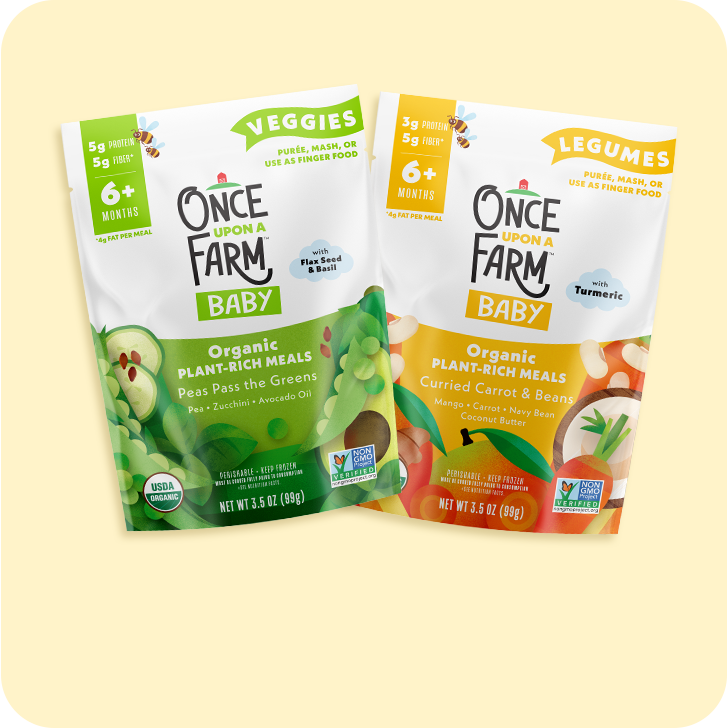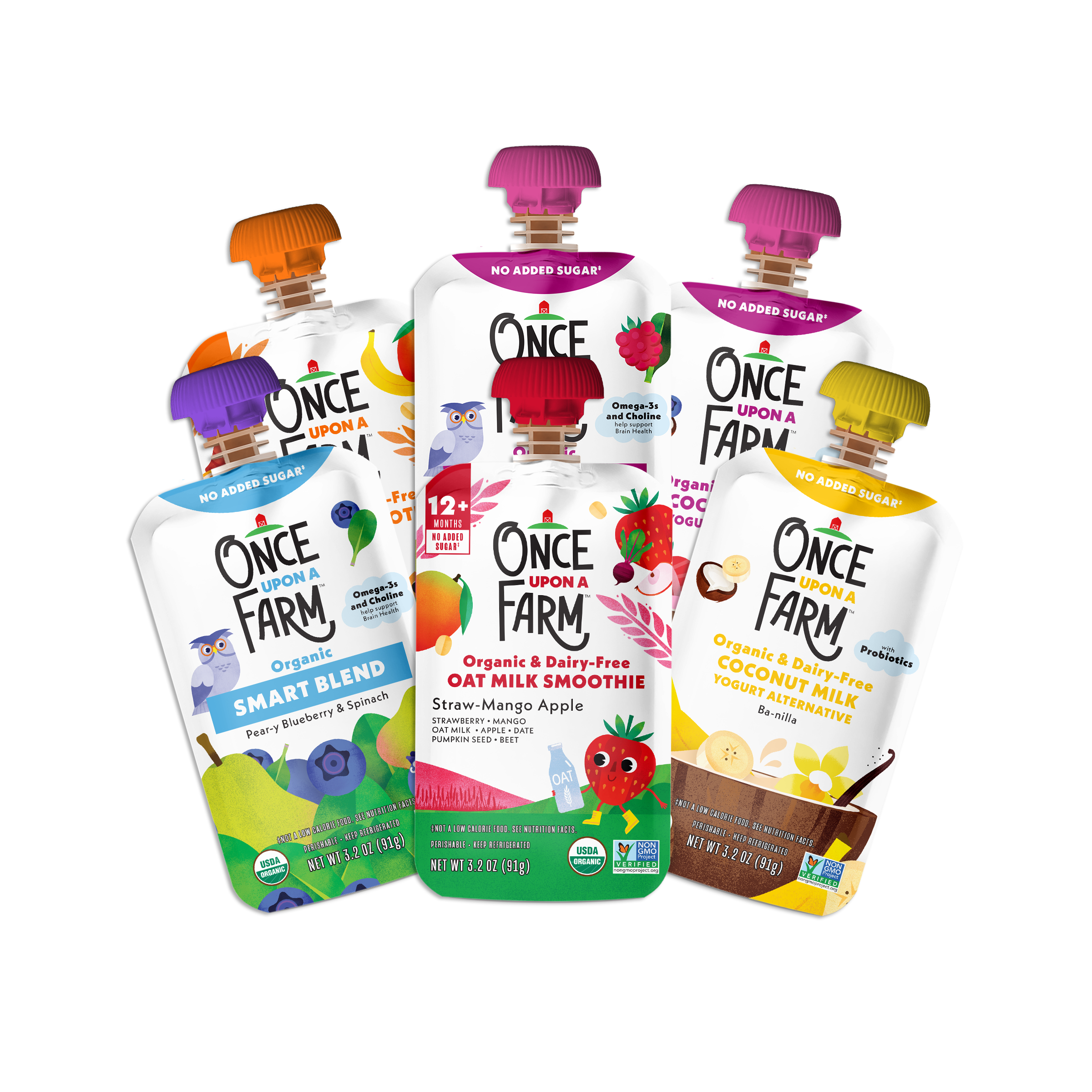Note: This blog is not medical advice and is for informational purposes only. Please refer to your child’s healthcare provider with any specific recommendations or concerns. Food suggestions are not appropriate for all age groups. Be sure that your child is ready for these snacks. Be mindful of food size and texture and cut into age-appropriate pieces to minimize choking risk as needed. More info on choking hazards here.
When introducing our baby to solids, and as we continue to feed and serve our children new types of foods, one great fear for parents and caregivers alike is choking. While it is a terrifying possibility, there are key things to know that can help you prevent choking and be prepared should it happen to your little one.
When Are Kids Most Vulnerable to Choking?
According to Feeding Specialist Melanie Potock, MA, CCC-SLP, and the American Academy of Pediatrics (AAP), “Most deadly choking incidents occur in children ages three and under and include choking on household objects (like toys and coins) as well as unsafe foods.” The AAP recommends waiting to serve certain foods until after the age of four or ensuring you prepare them in a child-safe manner for younger kids. As parents of young children know, they love to put things in their mouths and because they have smaller airways that are more easily obstructed, the choking risk is higher. Potock adds that “Preschoolers have limited attention spans, plus their airway (esophagus) is still quite narrow compared to an adult’s.” So, you always have to be alert.
How Parents Can Safely Introduce New Foods
When starting solids, wait until your baby is about six months old and they can sit upright with minimal support. Once you’ve set out on this journey, Potock has some key things to keep in mind:
1. Learn CPR.
Before starting your baby on solids, try to take a CPR course, specifically centered on CPR for children. This will help you be prepared and give you more confidence while feeding your baby, Potock says. These courses are available online and often in local community centers, hospitals, and schools.
2. Ensure your baby has proper, supportive seating.
“Babies and toddlers should be buckled into their highchairs," Potock says, "not only to prevent falls but to help their mouth and airway align for swallowing safety." A baby’s hips should generally be at a 90-degree angle or just slightly tilted forward. “Once their legs are long enough to bend at the knees while seated,” she adds, “then knees and ankles should also be at a 90-degree angle.” Providing a footrest where the child can place their entire foot, flat and secure, supports stability, which supports fine motor movements.
3. Keep your eye on your baby (or young child) while they’re eating.
This might go without saying, but it’s important to remember that choking often has no sounds “because the food blocks the airway, also blocking the vocal folds (chords).” Potock reminds us. Smile, interact, and chat with your child, but she recommends saving boisterous laughter for playtime “to keep the focus on managing food safely for chewing and swallowing.”
Common Choking Hazards for Kids + Tips for Minimizing Risk
🌭 Whole Hot Dogs: Potock recommends avoiding whole hot dogs until age four. “For children over the age of one, cook and then cut into strips the width of an adult pinky finger and then dice the strips into pea-sized bites.”
🥜 Nuts and Seeds: When serving, chop finely and stir into foods such as oatmeal or baked goods.
🍞 Nut or Seed Butters: “Avoid globs of nut and seed butters,” Potock suggests, “instead, spread thinly on toast or crackers that melt easily in a young child’s mouth.” For babies under one, avoid these types of butters and soft bread as the combination can be easily stuck in their airway.
🧀 Chunks of Meat or Cheese: “Soft, pasteurized cheese spread thinly on toast or crackers that melt easily are safer for babies and young toddlers,” Potock advises. Firm cheeses can be served but should be cut into thin strips. Small cheddar cubes and string cheese are better for kids around age three. “The same methods can be used for moist meats,” Potock says, “such as shredded pork or very moist rotisserie chicken cut into strips or smaller, manageable pieces.”
🍇 Whole Grapes: Quarter grapes or chop finely until age four. At three, Potock says supervised practice learning how to bite into grapes can be beneficial in preparation for independence at age four.
🍬 Hard Candy, Stick Candy, Chewing Gum: Avoid until age four.
🍿 Popcorn: Wait until after age three, at which point young kids can have one kernel at a time. “Be especially aware of serving popcorn in dark movie theaters or TV rooms where attention is on the film,” Potock says, as this can make it hard to monitor your little one. Again, choking typically has no sounds, so watching them as they eat risky foods is key!
🥕 Chunks or Whole Raw Vegetables: Potock advises avoiding till around age three, or serving roasted, steamed, stir-fried, or cooked into other safe foods (e.g. scrambled eggs). You can shave certain crunchy vegetables as a safer option, too.
Hopefully, this helps you feel more confident as you set out on the solids journey—and serves as a reminder to schedule your CPR course!





















